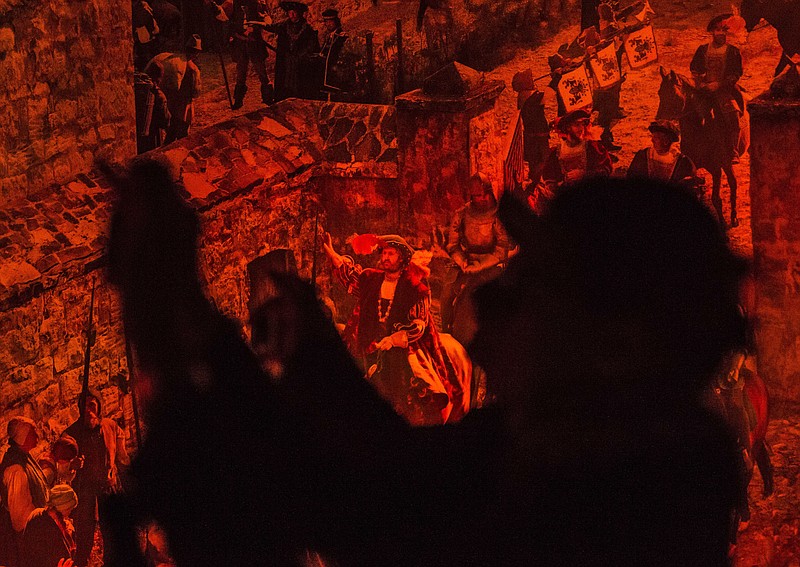The most dramatic moment of the Protestant Reformation occurred in April of 1521. Three and a half years earlier, Martin Luther had posted his 95 Theses attacking the abusive sale of indulgences -- which promised the pardon of sin through payment -- and other evidence of corruption in the Western Church of the time. When printed, Luther's theses became a runaway best-seller, igniting enormous opposition to the indulgence market, to the Pope and to the hierarchy of the Church.
Given the chance to recant his views in 1521, Luther refused and was excommunicated. This only drove Luther to further develop his theology, which was based on the idea of justification by faith alone, and to call more loudly for the nobles and people of Germany to oppose corruption in the Church.
Charles V, the newly elected Holy Roman Emperor and a devout though reform-minded Catholic, thus faced a religious crisis. He did not believe that a kingdom divided by religion could survive. Also, he faced increasing pressure from the papacy to deal with Luther. So he summoned Luther to appear before the imperial parliament in the city of Worms, granting him a promise of safe conduct.
Luther knew that ignoring an imperial summons was not an option, but he also knew what happened to the Bohemian reformer Jan Hus when he had been granted safe conduct by the emperor to a church council in Constance: The council ignored the safe conduct, claiming that they were not obligated to keep their word to a heretic, and then burned Hus alive. Luther shared many of Hus' ideas.
Still, Luther went to Worms expecting a chance to present and defend his views. However, when he arrived, he was told there would be no discussion nor debate, only the opportunity to recant.
Luther asked for time to consider and was given one day. After a night wrestling with his conscience and fears, he returned to the Diet the following day, April 18, 1521. When asked to recant, he attempted a nuanced reply. He was quickly cut off with a demand that he answer only yes or no.
Luther replied, "Since then your serene Majesty and your lordships seek a simple answer, I will give it in this manner, neither horned nor toothed. Unless I am convinced by the testimony of the Scriptures or by clear reason (for I do not trust either in the Pope or in councils alone, since it is well known that they have often erred and contradicted themselves), I am bound by the Scriptures I have quoted and my conscience is captive to the Word of God. I cannot and will not retract anything, since it is neither safe nor right to go against conscience. Here I stand; I can do no other. May God help me. Amen."
True to his word, Charles V allowed Luther to leave Worms, although he put a price on his head later.
Christians today can learn from Luther about taking a stand. First, like Luther, our convictions need to be grounded in Holy Scripture. This applies both ways. On one hand, we cannot simply ignore the clear teaching of Scripture, even if it is particularly controversial. On the other hand, we must not elevate convictions that Scripture does not.
Second, Luther refused to allow others to dictate to his conscience. Neither Church nor state has authority over conscience; that authority rests in the hands of God alone.
Third, even in danger of death, Luther was true to the teaching of Scripture. The defining trait of taking a stand is that it will be costly and risky. Going along with the crowd is far easier and costs nothing. It will take real courage to oppose the dominant narratives of culture, to stand for God's truth against the lies of the age and the power of the cultural elites. To do so will make enemies, lose friends and destroy a reputation. Yet that may be what God calls us to do.
On July 27, I will be hosting a conversation about taking a stand in this cultural moment at the 2023 Great Lakes Symposium on Christian Worldview in Bay Harbor, Michigan. I'll be joined by Jim Daly, CEO and president of Focus on the Family, and Kristen Waggoner, CEO, president and general counsel of the Alliance Defending Freedom. Please mark the date, July 27, to either join us live or by livestream.
Glenn Sunshine contributed to this column.
From Breakpoint, April 14, 2023; reprinted by permission of the Colson Center, breakpoint.org.
